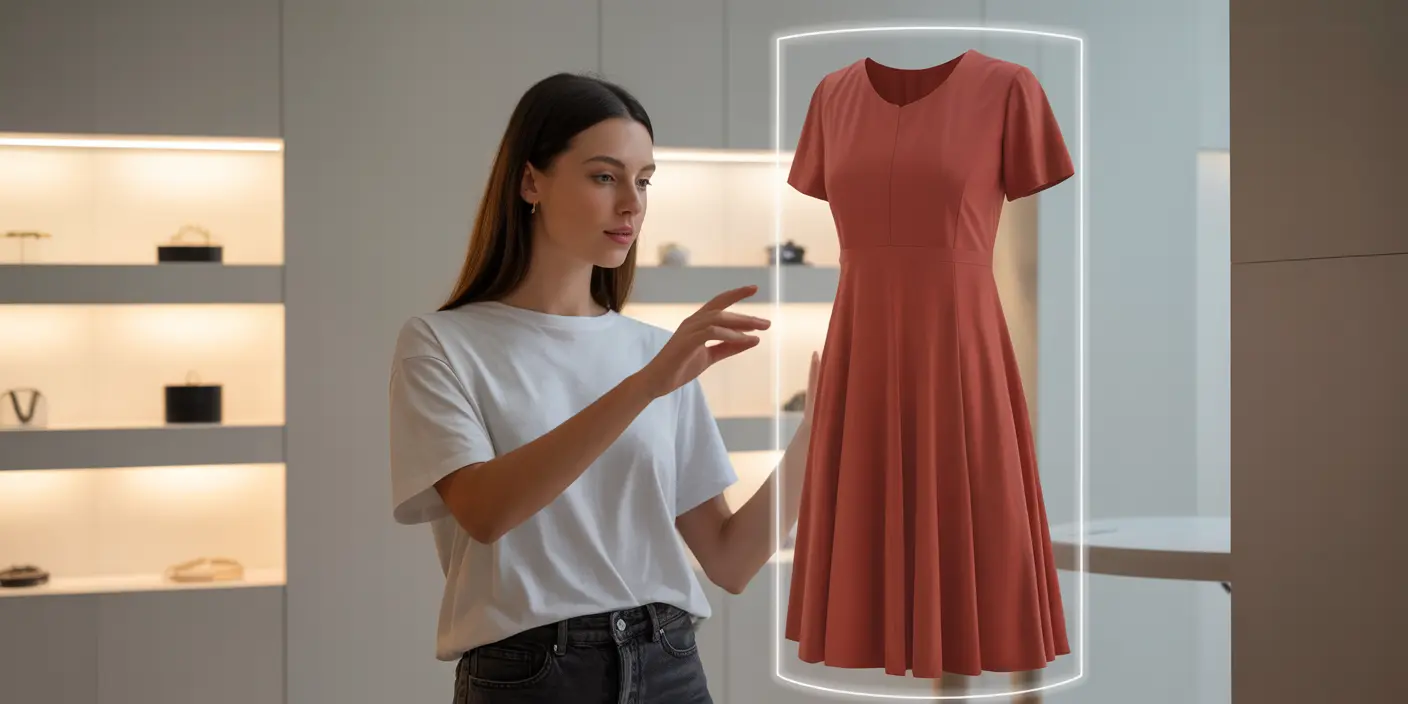Home / Blog / The Role of Augmented Reality in Retail: A Game Changer for Online Shopping
Discover how augmented reality (AR) is transforming online shopping by enhancing engagement, reducing returns, and driving sales. Learn how retailers are using AR to create immersive experiences and gain a competitive edge.
10 Sep, 2025

Online shopping is evolving at an unprecedented pace. Static images, simple product descriptions, and traditional e-commerce interfaces no longer satisfy modern consumers. Shoppers now demand interactive, personalized, and immersive experiences that replicate, and sometimes surpass, in-store shopping.
This is where Augmented Reality (AR) steps in. AR overlays digital elements like 3D images, animations, and information onto the real world, enabling shoppers to visualize products in their environment before making a purchase.
For example, a leading fashion retailer integrated AR into its app. Customers could virtually try on outfits, mix and match accessories, and see how clothes fit their body type all from home. The result? A noticeable increase in conversion rates, a reduction in return rates, and highly satisfied shoppers.
At 10turtle, we specialize in AI-powered AR solutions AI Development that enhance online shopping experiences. Combined with web and app development services, we enable businesses to create seamless, interactive, and engaging AR-powered retail platforms.
Augmented Reality (AR) is a technology that overlays digital content onto the physical world. Unlike Virtual Reality (VR), which immerses users in a fully digital environment, AR enhances the real-world experience by adding virtual elements.
In retail, AR allows consumers to:
According to BrandXR, AR adoption is reaching a tipping point, with more
consumers expecting retailers to offer interactive AR features during online
shopping.
One of the most compelling benefits of AR is increased engagement. Consumers spend more time interacting with products when they can visualize, customize, and manipulate items virtually.
Example: Sephora’s Virtual Artist app allows users to try on makeup using AR. Users can experiment with different colors and shades, increasing usage by 16% per user Braze Case Study.
Engaged customers are more likely to convert, explore additional products, and return for future purchases.
Returns are a costly problem in e-commerce. According to research, around 30% of online purchases are returned, often due to size, fit, or style discrepancies. AR helps minimize this:
For instance, Salsify reports that AR reduces uncertainty and encourages informed purchasing decisions, leading to fewer returns and happier customers.
AR doesn’t just reduce returns; it can directly increase sales. By creating interactive shopping experiences, retailers encourage customers to explore and purchase more products.
Retailers adopting AR are positioning themselves as innovators in a competitive market. Early adoption helps brands:
Artlabs found that 70% of consumers have a positive perception of brands using AR, and conversion rates can increase by up to 30%.
While AR is powerful, it comes with challenges:
At 10turtle, we ensure AR solutions are user-friendly, secure, and tailored to business objectives Digital Marketing.
AR is set to become standard in online shopping, and businesses investing now will reap long-term competitive benefits.
Augmented Reality is redefining online shopping by creating engaging, interactive, and personalized experiences. Retailers adopting AR gain higher conversions, lower return rates, and stronger customer loyalty.
Want to explore how AR and AI can grow your business? Discover our services at 10turtle.com.
How do you see AR transforming your shopping experience? Let us know!
FAQ
How does AR reduce return
rates?
AR allows virtual try-ons and product visualization, letting customers make
informed purchases.
Which industries benefit most
from AR?
Fashion, furniture, cosmetics, and eyewear see the highest impact.
Is AR accessible to small
retailers?
Yes, modern AR development tools make it cost-effective and scalable.
How does AR boost customer
engagement?
AR provides interactive, gamified, and personalized experiences.
What technical resources are
needed for AR?
AR apps require software development, 3D modeling, and e-commerce integration.